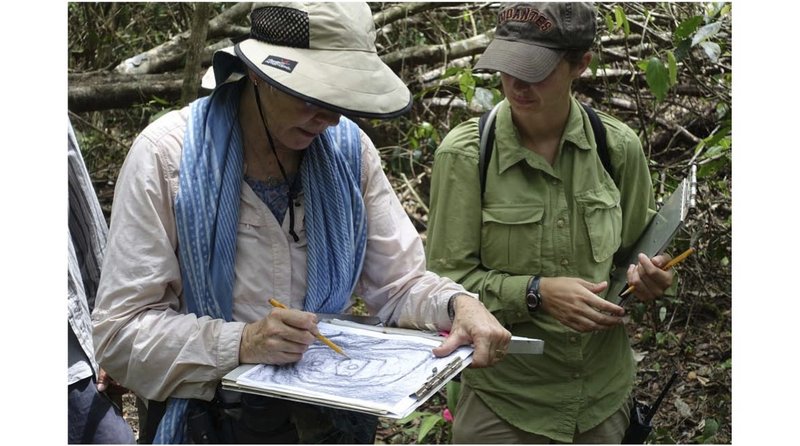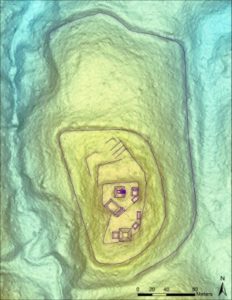
Located within the Belize River region and spread across the imaginary border between Guatemala and Belize, the ancient Maya site of El Pilar features an unusual and mysterious ancient construction complex that has archaeologists jumping for answers.
When last reported in March, 2015 in Popular Archaeology Magazine, archaeologist Anabel Ford, who has led investigations and research at El Pilar for many years, described the discovery of highly unusual construction work hidden beneath the shroud of centuries of jungle overgrowth. Nick-named the ‘Citadel’ because of its apparent defensive construction characteristics and relative geographic isolation from the rest of El Pilar, it was detected only through the application of remote sensing technology. Using LiDAR—Light (Laser) Detection and Ranging—equipment installed aboard an overflying helicopter, scientists were able to outline the construction features perched atop a ridge with the appearance of fortifications, consisting of concentric terracing and six structures, including two ‘temples’, each about five meters high. In a quest to find some answers, Ford returned to the site in 2015 with a team, this time to do some ‘ground-truthing” and limited excavation.
__________________________________________
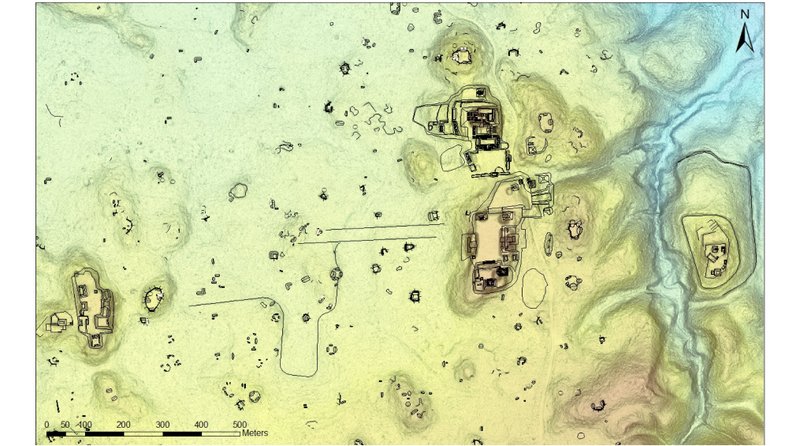 LiDAR image showing the core area of El Pilar, and the Citadel to the far right, or east of the core area. Courtesy BRASS/El Pilar
LiDAR image showing the core area of El Pilar, and the Citadel to the far right, or east of the core area. Courtesy BRASS/El Pilar
_________________________________________________________
After arriving and beginning work, however, the team found that they had to sift through extensive damage and debris left by looters. In addition, thick vines and underbrush had to be removed to examine and map the site. Despite this, the archaeologists began to develop a clearer picture of what they were uncovering.
“Covering almost 1 hectare, or about 2.5 acres, with 4-meter-high ramparts encircling a natural hill, the El Pilar ‘Citadel’ presents a remarkable image of construction ingenuity clearly with defense in mind,” said Ford. “While the lower two ramparts were created by the unusual strategy of quarrying into the limestone hill to create vertical faces that are impossible to scale, the upper terraces that make up the apex of the hill appear to be constructed with retaining walls and fill, a technique similar to most Maya monuments.”
But another surprise emerged. Said Ford, “the archaeologists discovered that the placement of temples and platforms was not in the expected form that should be aligned in the cardinal directions at the edges of a plaza. Instead, the main central temple, at the highest point of the hill, is squarely in the middle of the plaza and oriented to the east.”
____________________________________________
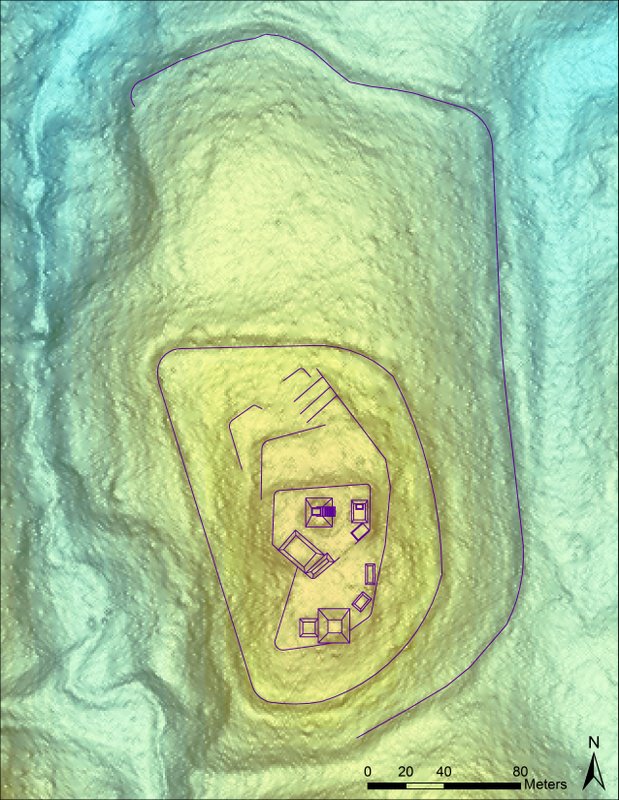 LiDAR image showing the Citadel with renderings of currently-detected structures and their relative dimensions and locations at the top of the ridge, including the two lower ramparts. Courtesy BRASS/El Pilar
LiDAR image showing the Citadel with renderings of currently-detected structures and their relative dimensions and locations at the top of the ridge, including the two lower ramparts. Courtesy BRASS/El Pilar
______________________________________________
The team has been cleaning the debris of looter’s trenches excavated decades ago into the core of two of the largest temples at the top of the Citadel. These efforts exposed a massive looter’s trench and shaft that demolished the center of the highest structure to a depth of almost 7 meters and exposed the details of some 10 construction episodes. Plaster floors, walls, stairs, rooms, and charcoal layers make up the sequence the archaeologists are piecing together from the devastation of this temple wrought by the looters. A second looter’s trench was discovered in another temple located within a southern plaza. “The looter’s excavation destroyed the top of the temple and pried out beautifully dressed stone using picks on elegantly prepared stucco with painted black lines, showing cavalier disregard for the complexity of the ancient architecture,” said Ford. “Walls, doorways, additions, as well as a major plaster floor more than 25 cm think were so thoroughly damaged it is difficult to understand the architectural relationships.”
_____________________________________________________________
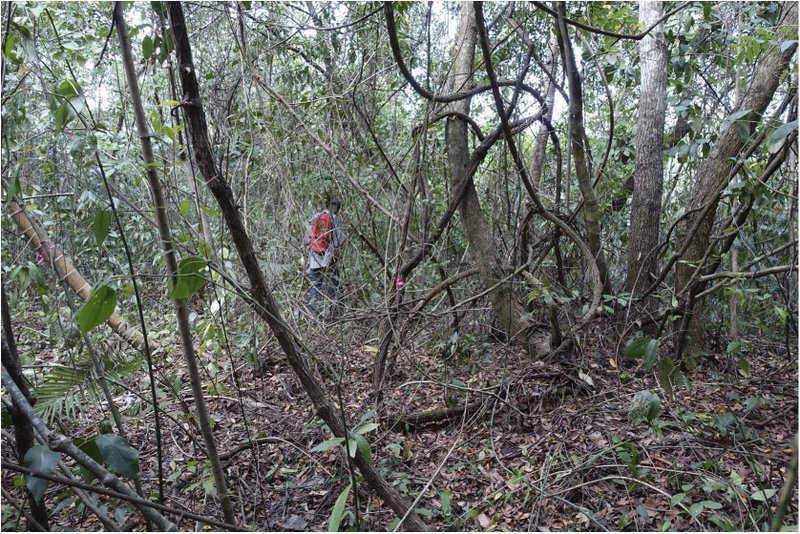 Thick vines and underbrush at the Citadel site had to be removed, leaving trees for shade, before further work and mapping could take place. Courtesy BRASS/El Pilar
Thick vines and underbrush at the Citadel site had to be removed, leaving trees for shade, before further work and mapping could take place. Courtesy BRASS/El Pilar
____________________________________________________________
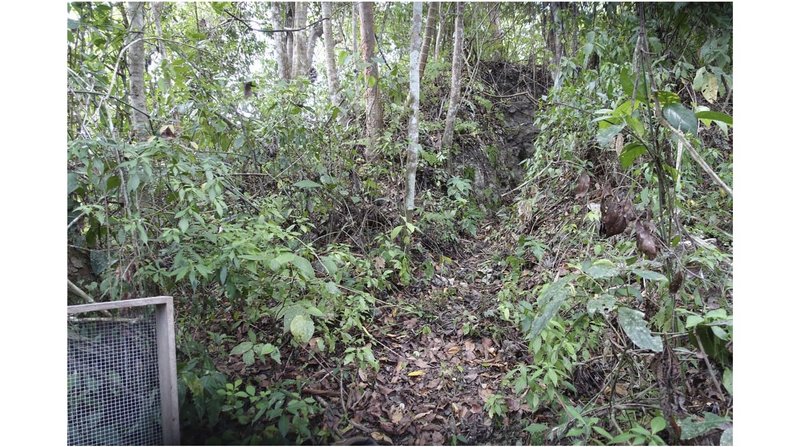 The center temple structure before removal of overgrowth and debris. Courtesy BRASS/El Pilar
The center temple structure before removal of overgrowth and debris. Courtesy BRASS/El Pilar
___________________________________________________________
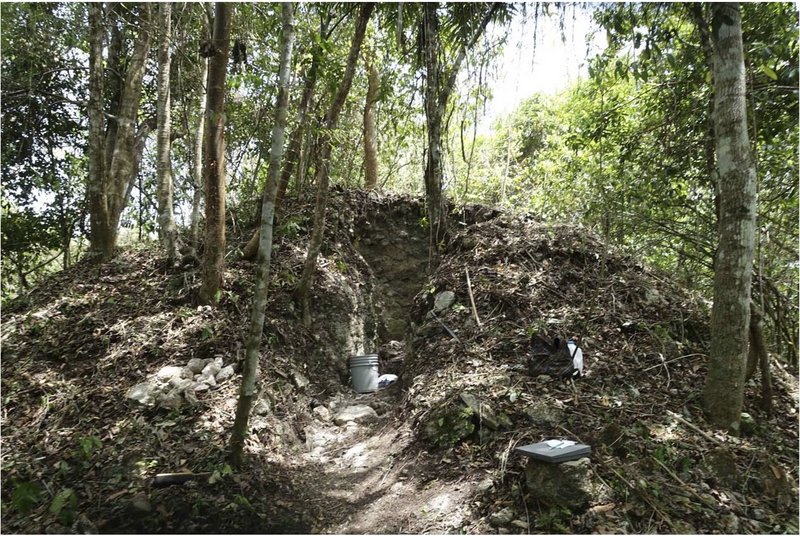 Center temple after clearing. Courtesy BRASS/El Pilar
Center temple after clearing. Courtesy BRASS/El Pilar
______________________________________________________________
Mapping the Citadel. Dr. Anabel Ford (left) with Julia Longo, a key member of the special team. Courtesy BRASS/El Pilar
___________________________________________________________
While the archaeologists are only beginning to understand the construction chronology of the El Pilar Citadel, Ford says that many of the ceramics gathered in the looter’s back dirt suggest an early occupation in the Preclassic (the time range from before 1000 B.C. to 250 A.D.).
El Pilar is considered the largest site in the Belize River region, boasting over 25 known plazas and hundreds of other structures, covering an area of about 120 acres. Monumental construction at El Pilar began in the Middle Preclassic period, around 800 BCE, and at its height centuries later it supported more than 20,000 people. Ford, who is the Director of the BRASS/El Pilar Program at the MesoAmerican Research Center of the University of California, Santa Barbara, has taken a “hands-off,” highly selective conservation approach to investigating the site. With the exception of a fully exposed Maya house structure, most of the structures at El Pilar have remained completely conserved by design, still covered in their tropical shroud. The Citadel excavations have opened a new chapter in the research at El Pilar.
It is too early to ascertain the dating of the construction with assurance and to draw reasonable conclusions about the nature or functions of the Citadel, but Ford says she continues to work on profiles and the analysis of the ceramics excavated at the site. She hopes to know much more in the coming weeks.
For now, there is always room for more questions. “Was this the site of the original constructions of El Pilar?” Ford asks. She knows with confidence that it will only take a matter of time and meticulous examination of the uncovered evidence. “We’re on the trail to discover the answer.”
______________________________________________________
See the previous related story in Popular Archaeology Magazine.
_________________________________________
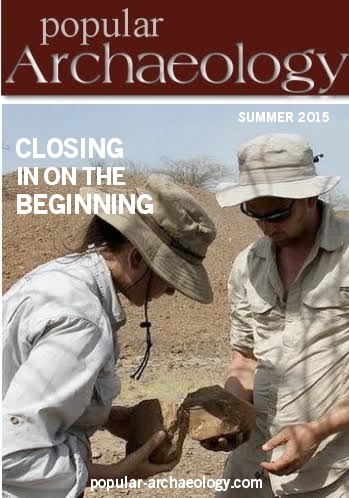 Read more in-depth articles about archaeology with a premium subscription to Popular Archaeology Magazine.
Read more in-depth articles about archaeology with a premium subscription to Popular Archaeology Magazine.
In addition, the latest Popular Archaeology ebook is now available.
______________________________________________
Travel and learn with Far Horizons.
____________________________________________
 Popular Archaeology’s annual Discovery Edition eBook is a selection of the best stories published in Popular Archaeology Magazine in past issues, with an emphasis on some of the most significant, groundbreaking, or fascinating discoveries in the fields of archaeology and paleoanthropology and related fields. At least some of the articles have been updated or revised specifically for the Discovery edition. We can confidently say that there is no other single issue of an archaeology-related magazine, paper print or online, that contains as much major feature article content as this one. The latest issue, volume 2, has just been released. Go to the Discovery edition page for more information.
Popular Archaeology’s annual Discovery Edition eBook is a selection of the best stories published in Popular Archaeology Magazine in past issues, with an emphasis on some of the most significant, groundbreaking, or fascinating discoveries in the fields of archaeology and paleoanthropology and related fields. At least some of the articles have been updated or revised specifically for the Discovery edition. We can confidently say that there is no other single issue of an archaeology-related magazine, paper print or online, that contains as much major feature article content as this one. The latest issue, volume 2, has just been released. Go to the Discovery edition page for more information.
____________________________________________

